What is Marketing Automation and How Does It Help Marketers
Originally published: November 30, 2020 02:10:01 PM, updated: February 21, 2023 11:16:47 AM

Before I dive deep into marketing automation and explain all aspects of this industry, let me first answer this question: What is marketing automation? On the web, you will find many definitions. But the simplest one I prefer to go with is: Marketing automation is all about using software to automate repetitive tasks and activities such as email marketing, social media posting, and even ad campaigns.
The purpose of automating your marketing campaign is not just for the sake of efficiency but also to personalize the experience for your prospects and customers. In this article, I’ll do my best to cover everything related to this industry.
I highly believe that marketing automation is not optional in today’s digital landscape; it’s mandatory if you really want to progress faster and easier, as well as save your business. To put it another way, to get a successful digital marketing campaign, you definitely need to automate your tasks and activities. Otherwise, you will be an ideal loser and find yourself out of the market.
Business owners, executives, and marketers say that the biggest benefit of marketing automation for them is saving time at 30%:

Marketers realize that to win a successful digital marketing campaign, they need to implement the four steps listed below carefully:
- Attract: It’s about creating the right content to get the target audience's attention.
- Convert: It’s the process of converting the attracted audience into leads.
- Close: It’s the process of closing the deals – it’s a sales team mission.
- Delight: It’s the process of satisfying the customer.
But, ignoring the automation process to implement the above steps will result in bad outcomes. In other words, the expert marketers need to think about: Automatic attraction, automatic conversion, and automatic satisfaction.
Let’s get started and dive into marketing automation.
Email Marketing Automation
Automated email marketing is the process of sending out emails to your prospects and customers automatically. This can be done through an email schedule or defined triggers.
It sounds simple, right? For the most part, it is. There is a wide range of email marketing automation services on the web, each with its own pros and cons.
Triggering emails can be based on your subscribers’ behavior. These types of emails are the most common forms of automated emails. Generally, trigger emails include:
- Welcome emails
- Getting started with your service or products
- Abandoned cart emails
- Refer-a-friend
- Milestone emails such as birthday, join date, and specific milestones
Moreover, to get the best results with your automated email marketing campaign, you need to segment your subscribers and personalize your messages based on specific criteria such as location, industry, service/product purchased, and acquisition channels (Ex. Organic search, ad campaign, direct, social, or referral sites).
There are many platforms for automating email marketing, but if you want to have one place for gaming this type of automation, HubSpot is the best choice to go with. HubSpot can do more than CRM. It’s actually a powerful platform to grow your business. It has a marketing hub and sales hub.
With HubSpot, you will find two forms of automation, sequences and workflows. With sequences, you can easily automate your follow-ups. In other words, you can queue up a series of personalized follow-up emails that automatically get delivered at the right time.
You can effectively automate your process concerning workflows, scale your growth, and spend less time on repetitive tasks and activities.
Social Media Automation
Social media automation is the process of using automated tools to improve your online presence through content curation and post scheduling. The key benefit of automating your social media marketing is to reduce time spent gathering posts so you can focus on growing your account by engaging with your audience.

Social media automation tools shouldn’t be used to write your social media posts – They should generate content ideas, reporting, and post scheduling. Generally, social media automation includes:
1. Social listening
In its short definition, social listening is the process of monitoring what users are saying about your brand or industry online. With automation tools, you can easily handle this process and know what’s happening in your industry by following certain topics, keywords, or hashtags.
2. Using chatbots
A chatbot is an artificial intelligence software that can simulate a chat with a user using natural language. This can be done through messaging applications, websites, mobile apps, or through the telephone. With chatbots, you can automate your marketing and customer service to maximize your revenue.
3. Gaining valuable insights about your social media engagement
To improve your social media strategy, it’s important to understand how and when your audience engages with your brand. In other words, to successfully win the engagement, you need to determine the best time to post. With social media automation tools, you will get detailed insights about your social media activities, including impressions, reach, conversions, and engagement on all your social media accounts in one place.
4. Producing content curation ideas
Not all social media automation tools provide content curation ideas. Thus, you need to choose the tool that can help you curate your content according to industries or topics that your audience is interested in. With content curation ideas, you will save time and boost your brand awareness. Fast.
5. Engaging with your audience
A large benefit of using social automation tools is that they can improve your engagement across several social media platforms in one place. With these tools, you can help your team monitor brand mentions, messages, replies and engage promptly.
6. Scheduling posts
If you manage different social media platforms and want to keep a steady queue of posts, you definitely need to use automation tools.
Concerning social media automation tools, here is my suggested list.
1. HubSpot
Once again, HubSpot can do more than CRM. In addition to the mentioned above, with HubSpot social media tool, you can simply automate and prioritize your social media interactions. Trust me; It’s worth a try!
2. Buffer
I have used the Buffer platform since 2012. There is no doubt that Buffer is a good alternative for HubSpot social media tools. But you need to spend some time comparing both platforms' features to see what works for you best.
3. Hootsuite
With the Hootsuite platform, you almost can do everything… You can publish/schedule posts, engage with your audience, advertise, monitor brand mentions, and analyze. It’s a magic platform.
Google Ads Automation
A man who stops advertising to save money is like a man who stops a clock to save time… To put it another way, advertising is a must to grow your business. You will find many ad platforms on the web that can help you accomplish that, such as Google Ads, Facebook Ads, Twitter Ads, and LinkedIn Ads. But, you need to be a believer in the concept “ Less can be more” (which I am). This means you don’t need to launch ads on all these ad platforms. Simply go for what works for your business. Otherwise, you're wasting your time.
In this article, there is no room to talk about all these ad platforms' automation. Therefore I’ll focus on Google Ads as I strongly believe it’s a perfect choice for businesses that offer professional services.
Here are some areas to leverage the power of automation with Google Ads.
1. Automated Bidding Strategy
Google has many different bid strategies that advertisers can pick from. Here is a list of them:
- Target CPA (Cost Per Acquisition)
- Target ROAS (Return On Ad Spend)
- Maximize Clicks
- Maximize Conversions
- Maximize Conversion Value
- Target Impression Share
- Manual CPC
Excluding “Manual CPC,” the above bid strategies involve an automated feature to help advertisers get the best results, especially when it comes to conversions. For example, the bid strategy “Maximize Conversions” helps advertisers get the most conversions within the budget. It takes into account some audience factors like demographics.
2. Google Ads Scripts
Scripts are one of the complex parts of Google Ads. It requires advertisers to be familiar with coding – Google has a big script library that you can steal from instead of learning the coding.
With Google Ads Scripts, the advertisers can unlock some automation power and campaign performance.
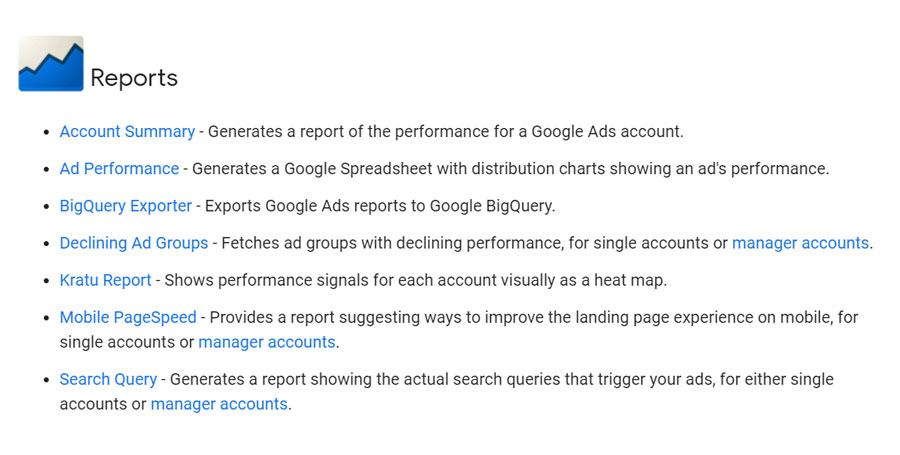
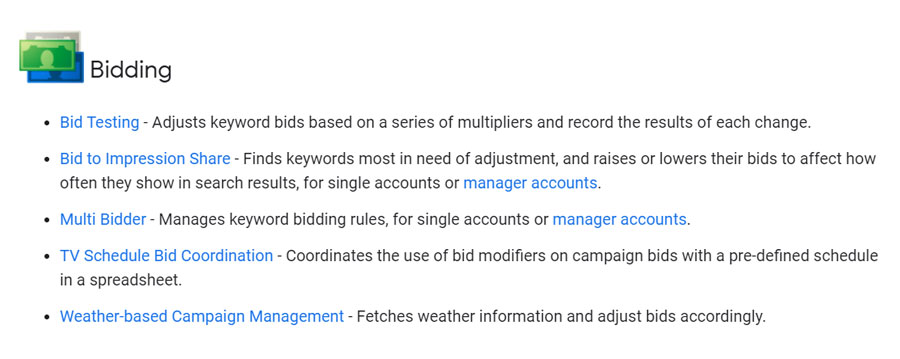
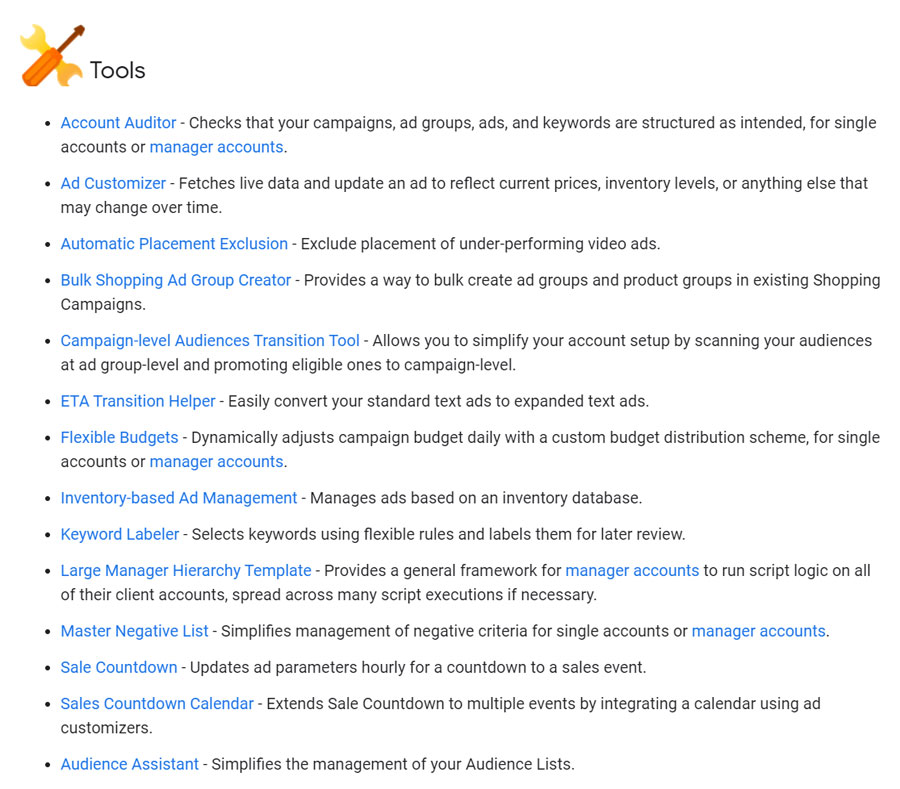

So, you can use Google Ads Scripts to:
- Adjust your campaign’s bid and budget
- Create detailed reports
- Audit your Google Ads account
- Automate negative keyword lists
- Set up account alerts
By taking pieces from Google Ads Library, you almost can automate every action you used to take
3. Dynamic Search Ads
Dynamic Search Ads are the easiest way to target customers searching for your products or services on Google Search. Dynamic Search Ad headlines and landing pages are also automatically generated using content from your website to keep your ads relevant and save time. Thankfully, this is another area where Google’s machine learning has your back.
If you combine Dynamic Search Ad with one of the automated bidding strategies listed above, you will get a campaign that nearly created itself.
4. Google Ads Automation Rules
With Google Ads rules, the advertisers can save time by automating actions based on conditions they specify. Here are the areas that Google Ads rules can cover:
- Campaign rules
- Ad group rules
- Keyword rules
- Ad rules
- Display keyword rules
- Topic rules
- Placement rules
- Audience rules
- Age range rules
- Gender rules
- Parental status rules
- Income range rules
For example, if you want to automatically increase your daily budget by 25% for a specific condition (let’s say you have a conversion cost greater than $5) on all activate campaigns, you can easily accomplish that with Google Ads rules.
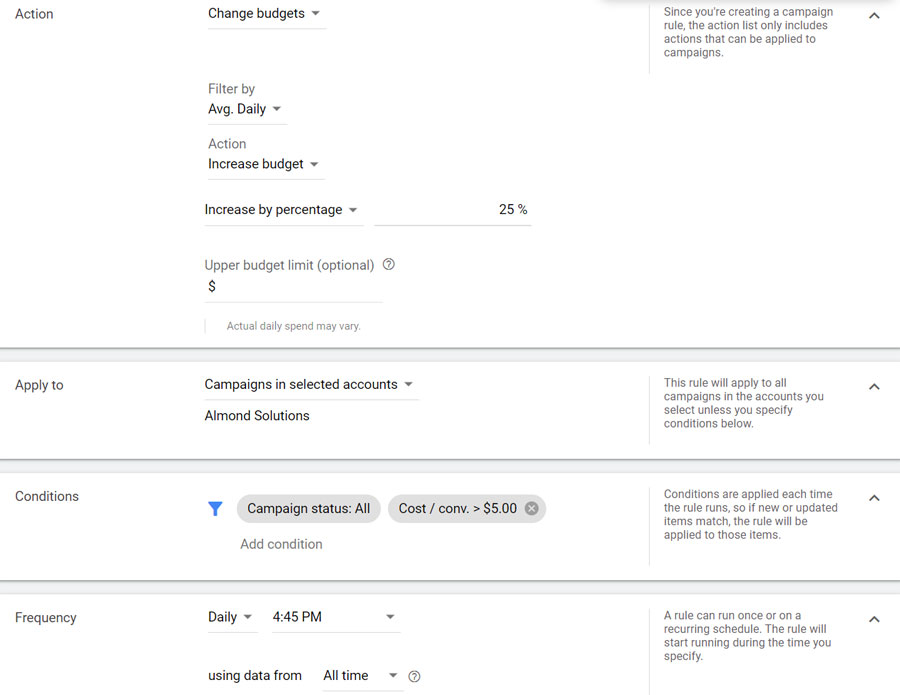
Simple enough, right?
Customize many different Google Ads rules for your campaign and watch it run without lifting a finger.
5. Google Sheets Integration
With Google Ads, you can create custom reports to get detailed insights about the campaign’s performance. Without automating this activity, you may spend hours a week creating them from scratch. Imagine you do this task manually every week. Of course, it’s a waste of time.
The solution is, integrating Google Sheets with Google Ads…
By integrating Google Sheets with Google Ads, you can automate creating these reports, in which you can pull data from Google Ads every single day, week, or month. While you still have some important tasks to do, it’s better than redoing it daily or weekly.
Install this plugin from the Chrome store to get started with this integration. Once done, open the Google sheets and go to “Add-ons” to automate creating reports from Google Ads.
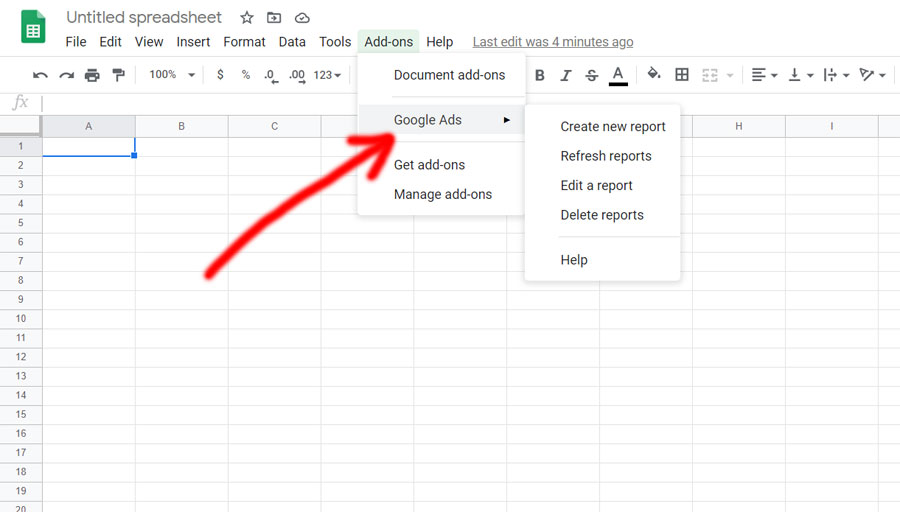
Additionally, with Google Ads automation tools, you can:
- Uncover competitors' ad campaign strategies and budgets, including:
- Know who your main paid search competitors are
- Monitor your rivals' PPC activities, their ad campaign spends and most profitable ad copy
- Analyze your competitors' Google Ads usage trends
- View examples of their live ad campaigns
- Find desktop and mobile keywords your competitors are bidding on
- View keywords and ad texts for over 100 countries and in more than 20 languages
- Analyze competitors' keywords and ad copy, including:
- Discover your rivals' top-performing paid keywords
- See what emotional triggers they are using in their ad copy
- Learn your competitors' advertising habits throughout the year
SEO Automation
SEO automation is all about automating search engine optimization using tools, software, and other programs to reduce human labor. As I mentioned above, automation's main reason is to free up considerable time for administrative work.
Automating the entire SEO process is very complicated, especially when it comes to website structure like page speed, coding, content creation, and link building.
What parts of SEO can I automate?
1. SEO Analysis
Analyzing SEO manually, including on-page and off-page aspects, takes more time and effort. Imagine you have a website with more than 1000 pages and just want to audit your page’s title and meta description for every single page. How long does it really take you to get this work done? Of course, much time. But, with an automation tool, this task can be handled in a few minutes.
2. Website Monitoring
If you manage an SEO campaign (in-house) for your company and want to get optimal results, you regularly need to monitor your site performance to know what you need to improve. Handling this task manually requires your team to allocate more time and effort. Let’s say it’s fine with one SEO campaign. But what can you do if you are an SEO agency and managing different SEO campaigns for your clients? Of course, you will lose control of this task.
Here are some elements that need to be monitored regularly:
- Page load time
- Site uptime
- Site performance
- Broken links
- Link profile
- And much more
With automation, you can easily monitor the above elements to see how they perform. It really helps SEOs to simplify the process and make improvements.
3. Rank Tracking
SEO's main purpose is to rank your targeted keywords in search engines. It’s a big challenge for SEO experts to track keyword ranking manually, especially when they have different SEO campaigns with hundreds of pages.
But, with automation, rank tracking is super easy. All you need to do is finding a convenient tool and then identifying the keywords that you want to track.
It sounds simple, right? And for the most part, it is.
4. Backlink Analysis
Backlinks are one of SEO's primary factors and an essential part of the ranking. To keep your backlink profile clean, you need to regularly monitor and analyze your backlinks that point to your website’s pages. In other words, it’s important to know the backlinks sources, anchor texts, and where these backlinks are pointing to.
Automating this task using professional tools can save your time and help you get a detailed analysis of your backlink profile, including backlinks sources, anchor texts, backlink status (no-follow/do-follow), link’s destination, and much more.
5. Competitor Monitoring
It’s important to monitor your competitors so you can find ways to outrank them. It’s a big challenge to get the first position, especially if you have a high competition level for a certain keyword. But monitoring their SEO projects in considering a strategic approach, you will have a big chance to outrank them and compete for the first position. Of course, this can be done with automation tools.
There is a wide range of tools that can help you automate your SEO campaign(s). One of my favorite tools is SEMrush. But if you are not a SEMrush lover, here are some alternatives:
- Screaming Frog SEO Spider: Screaming Frog is a desktop application where you can download on your local PC or laptop (Windows / macOS). With this awesome tool, you can do the following:
- Find broken links
- Audit redirects
- Analyze page title and metadata
- Discover duplicate content
- Extract data with XPath
- Review Robots and directives
- Generate an XML site map
- Integrate with Google Analytics and Google Search Console
- Crawl JavaScript websites
- Visualize site architecture
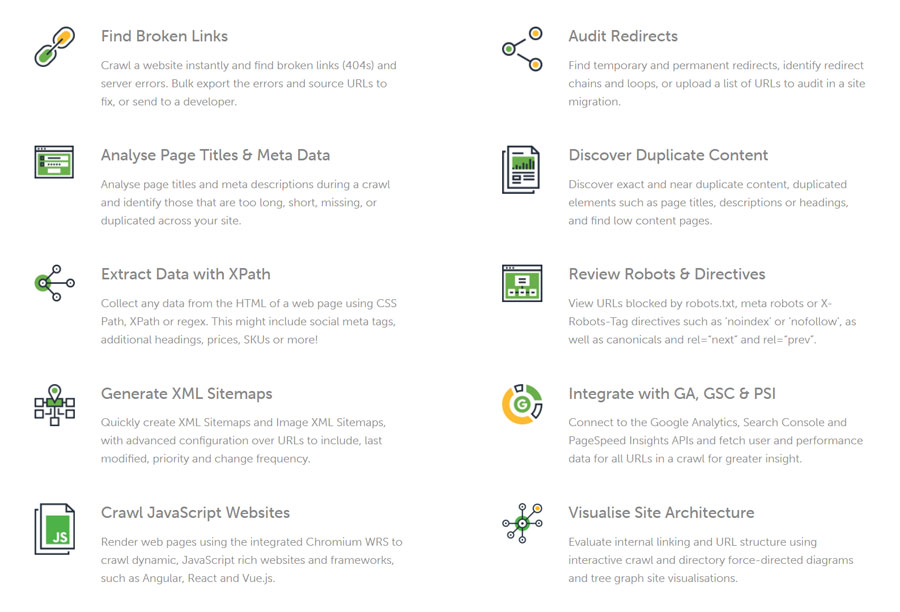
- ahrefs: With Ahrefs, you don’t have to be an SEO pro to rank higher and get more traffic.
- SE Ranking: With SE Ranking, you can get:
- 100% accurate keyword rank tracking
- In-depth website audit
- Backlink checking & monitoring
Content Marketing Automation
Content marketing is the process of creating, publishing, and distributing content for your target audience to attract, convert and close the deals with them. As I mentioned above, expert marketers need to automate this process using professional tools to save time.
What do you want to automate?
There are some aspects you can’t automate while implementing your content marketing strategy. For example, when creating a blog post, you need an expert blogger to write the content – and the same with Infographics and videos.
So, what parts can I automate?
1. Content Ideas
Looking for content topics, identifying trends, and studying keywords are all time-consuming. But with automation tools, the process is much faster and easier. For example, if you want to write a blog for your target audience and can’t decide which topic to write about, here is an idea generator.
2. Content Distribution and Scheduling
It’s time-consuming to manually distribute or schedule your content through social media manually and quickly become complicated if you manage different accounts. But with automation tools, this process can be accomplished faster and easier.
3. Content Proof-Reading
If you regularly share long-form content, it’s easy to overlook small errors in the copy. But this could impact your credibility with your readers. Thus, proof-reading is a must, and it’s time-consuming to do it manually.
The solution is, leveraging AI-based proof-reading tools like Grammarly.
4. Content Workflow
Workflow automation is an essential part of digital marketing strategy. For example, if This Then That (IFTTT) Platform lets digital marketers set up business rules that trigger an automated reaction to every single event. IFTTT has a wide range of integrations enabling automated content creation on almost every channel. A similar platform for content marketing automation is Zapier, where you can integrate over 1500 apps to automate workflows.
Website A/B Testing Automation
A/B testing (also known as split testing) is the process of showing two variants of the same web page to different segments of website visitors. For example, if you want to test which call-to-action color is more effective to encourage the visitor to take action, you need to create two variants of the same web page, including two different call-to-action colors.

It’s time-consuming to handle this process manually, especially if you want to test multiple elements on the same web page. What about doing this for multiple web pages? It's a crazy method!
But, when you automate this process using professional tools like Google Optimize, you will get ideal testing to improve your conversion rate – this is the main goal.
Here is a sample (screenshot) for one of my A/B testing using Google Optimize:
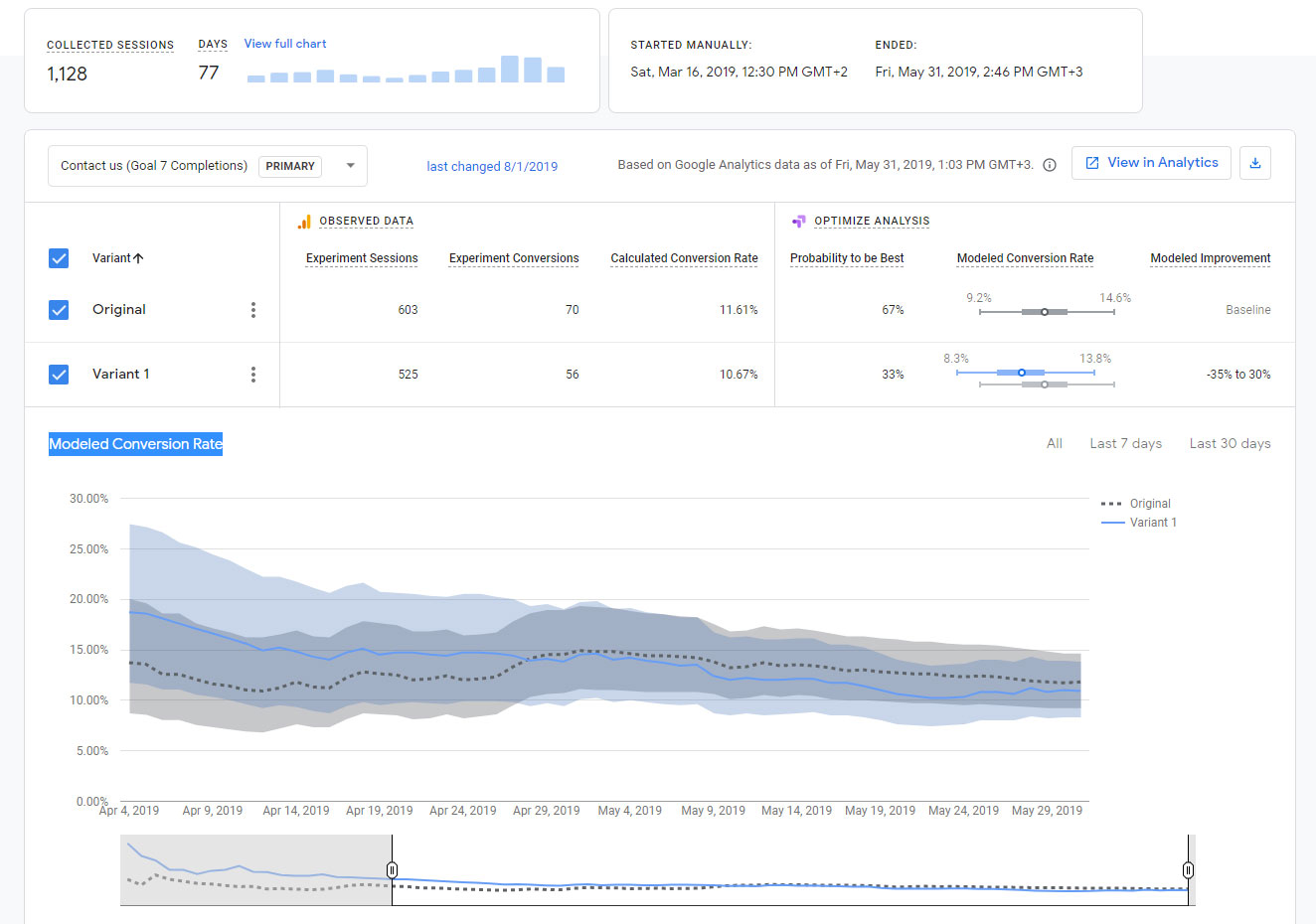
A/B testing is not limited to website content – you can also use it to test your email marketing campaigns and even your ad campaigns.
In this part, I talked about A/B testing to deliver automation's main message. But keep in mind to consider multivariate testing, in which multiple variables are modified.
Real-Time Website Personalization - Automation
Website personalization is the art of providing an exclusive one-on-one custom-made content/experience to your site’s visitors to help them take the desired action. The better you address the site’s visitor needs, the higher are their chances of taking the desired action and turning into loyal customers.
The question is, how to automate this process?
I’ll show you a real example on our website’s home page to explain this. In the image below, you see a piece of content “WEBSITE DESIGN & DIGITAL MARKETING SOLUTIONS UNDER ONE ROOF.” This content will be shown to users who visit our home page for the first time.

When the visitor returns to this page after a period of time determined by us, this piece of content will be changed automatically to fit his behavior (based on customized conditions) and encourage him to take the desired action as appearing in the images below.
After 24 hours

After 14 days
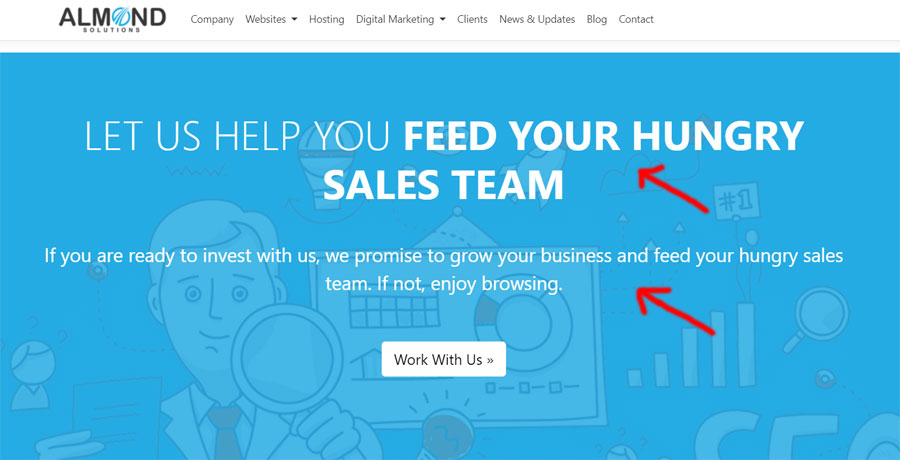
It's not magic; it's science and art!
Here is a list of awesome benefits of automating website personalization:
- Better converting Calls to action
- More relevant product recommendations
- High converting landing pages
- Improved customer loyalty
- A better understanding of your customers
- Fewer follow up emails
- Less wasted sales time
- Increased time on Site
- Greater brand affinity
Finding New Clients Automation
Without a doubt, you can still automate this process. We all agree that you can generate leads with the standard marketing processes, including email marketing, social media, SEO, etc. But here, I’m talking about different methods. Simply put, you can find prequalified small business leads, Identify Issues, then contact and close deals. How could this happen? I’m sure you are lucky!
Here is the solution, Lead Gorilla...
With this magic platform, you can find targeted leads from Google Maps, Facebook pages, and places. In other words, you can identify and analyze ranking factors for any local business ACTIVE on Google or Facebook in one click!
Lead Gorilla is the only platform to automate finding more local leads and sell more services.
Marketing Workflow Automation
Workflow is a series of steps or business processes taken to complete a task. Apart from the steps, other factors like timeliness, approvals, and task owners should be considered during the implementation.
When it comes to marketing automation, the workflow definition remains the same, but the concept takes a different role, customer journey. In other words, to successfully automate your marketing campaign, you need to understand what tasks or processes can be automated during the customer journey.
In marketing automation, the customers should get what they require when they require it. This can be accomplished with triggers – Simply put, triggers are customer actions that execute marketing automation processes.
For example, when a user signs up for a demo, the right marketing materials should be sent immediately to keep him on the same track.
Here are the workflows every smart marketer needs to have in their starting playbook:
1. Welcome workflow
Trigger: User signs up through website or app
2. Re-engagement workflow
Trigger: Contacts that are inactive (or didn’t open emails sent) for a specified time frame
3. Feedback workflow
Trigger: Client has just completed interaction (via live chat or ticketing system) with the support team
4. Cart abandonment workflow
Trigger: Potential customer adds products to the cart and leaves the website before completing the checkout process
5. Anonymous user workflow
Trigger: Time spent on a web page exceeds specified amount/scrolling indicates intent to exit the website
6. Topic workflow
Trigger: User registers his email address to access content
7. Lead nurturing workflow
Trigger: Contact has spent a specified amount of time at the top of the funnel
8. Upsell workflow
Trigger: Personalizing a sales pitch by referring to products within a user’s purchase history
9. Renewal/Upcoming purchase workflow
Trigger: Important dates related to past purchase history (database), especially those made on a cycle like an expiring subscription or a product that requires renewal
One of my favorite tools to connect apps and automate workflows is Zapier.
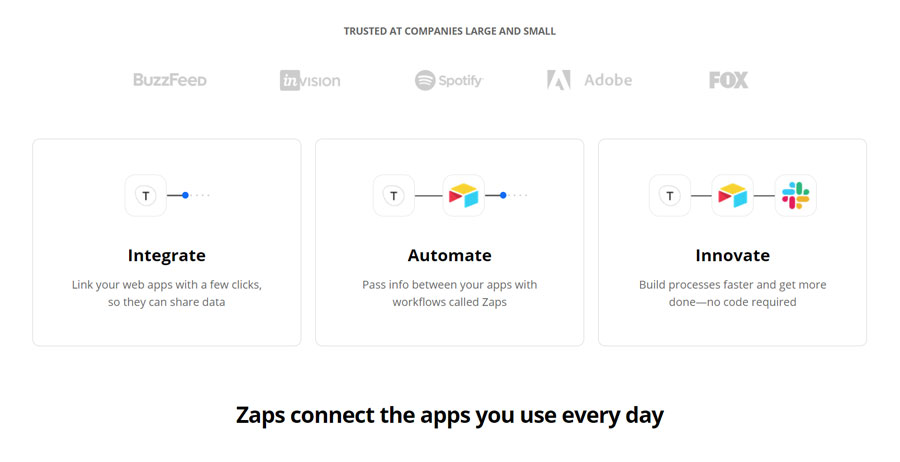
Here are some examples of the integration/automation that I personally made with the Zapier platform:
- How to Integrate Facebook Lead Ads with MailChimp
- Facebook Lead Ads and HubSpot CRM Integration
- How to Connect Facebook Lead Ads to Google Sheets
Marketing Automation Tools
Here are some of the important marketing automation tools you should try out to successfully streamline marketing functions.
1. Email Marketing
- Mailchimp helps you do big things with the right marketing tools and guidance every step of the way.
- Sendinblue helps you put your marketing at full throttle.
- SendX is a perfect tool to automate your email sequences.
- HubSpot can do more than CRM. It has a marketing hub and sales hub to do everything.
2. Social Media
- Hootsuite is a perfect tool to light up your channels.
- Buffer is a simpler social media platform for authentic engagement.
- HubSpot social media management software is a time-saving platform to help you prioritize your social interactions.
3. Google Ads
- SEMrush is an all-in-one marketing toolkit where you can use to optimize and improve your strategy.
- Revealbot is a powerful automation tool for managing ads.
- Instaon will automate everything from ad creation to optimization and help you reach your goals better than anyone.
4. Search Engine Optimization
- SEMrush is a perfect platform when it comes to SEO.
- ahrefs is an all-in-one SEO toolset where you can’t ignore.
- Screaming Frog is an industry-leading SEO tool.
5. Content Marketing
- BuzzSumo is the perfect tool to find the content that performs best.
- Grammarly is an AI-based proof-reading tool.
- HubSpot Blog Ideas Generator is a tool to think of blog ideas for you.
- Topic is a blog idea generator.
6. A/B Testing & Website Personalization
- Google Optimize is an ideal platform to optimize your website’s conversion rate.
- Optimizely is a good alternative for the Google Optimize platform.
7. Marketing Workflow
- Zapier is a professional platform to connect your apps and automate workflows.
- Ifttt is a good alternative for the Zapier platform.
Conclusion
Automate or die! The same concept of “true or false” or “black or white.” That’s all... If you are stuck to know how to start automating your marketing processes, feel free to get our help.
One request?
I’ve put so much effort into writing this blog post to provide value for you. It’ll be beneficial for me to consider sharing it on social media networks.
Written by Derar Barqawi
Got any questions? Ping me on Twitter.
Join over 130,000 SEO and Google Ads experts. We provide a community to help you engage and learn from industry experts and influencers. Join Now
What if your entire business could run itself — and your work hours got shorter?